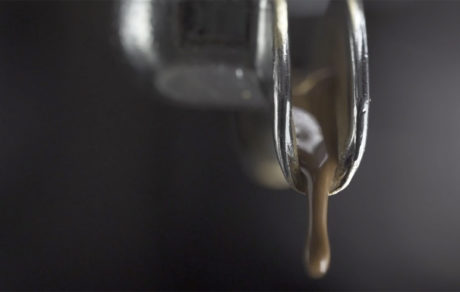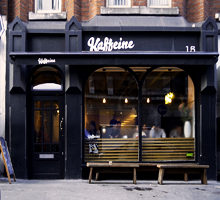Emergency, Emergency - An Explanation
Two of our regular and very lovely customers, who are residents to the area, were in recently and sitting on what is known as table five. This table is in line with the espresso machine and is perfect for doing what I intended it to do, allowing the customer (if they wish) to watch the staff in action at the same height. From this table you can sit with your back to the wall, watch the flow of customers entering, deciding on food, paying and collecting their coffee and then leaving or taking a seat.
You can also watch the baristas pouring the milk, doing the dishes and interacting, the floor staff taking orders and using the till and the general ebb and flow of a busy cafe where, when you are being smashed at 9 am, serving a customer every 10 seconds or so and all staff know their place and their jobs and there is a connection, a knowing, a feeling and an understanding amongst all staff of what needs to be done, how to do it and how to do it efficiently, professionally, without any fuss or often any words and most importantly, as a team and it all works and it is beautiful.
One of these customers is a doctor, and he commented after the 30 minutes that they were sitting watching, how well the team all work together under such pressure, in fact he related us to being as professional as any other medical team he had ever seen. Quite a compliment, we were very flattered, as this is what we strive for and is one of the joys of hospitality.
But what happens when something goes wrong? This, I believe, is the true test of any great team, leader and staff. When you are in the middle of a flow and something breaks and with a minimum of fuss, all is fixed and you are back on track again. How do you train staff for this? How do you train yourself? Most of the time it is over several problems that the same thing might happen and you get used to it. Possibly it comes down to training your managers as part of their induction. What is important is that as much as possible, no-one panics and the problem is fixed as soon as possible.
Here is a list of things that could go wrong at any one time in a cafe:
The power goes out completely in the whole street
The power goes out just to your store
The power goes off to the espresso machine only
The water goes off completely in the whole street
The espresso machine loses steam pressure
The espresso machine ‘turns itself off’
The grinder stops working
The espresso machine pump stops working
The Reverse Osmosis water system stops working
The pump on the RO unit nstops working
Water comes flooding out of the pipes under the espresso machine
Water comes flooding out from underneath the dishwasher
The dishwasher stops working
The sink tap breaks
The till (we use an Ipad with an app as a software program) stops working or crashes
The chef in the kitchen below comes upstairs and says ‘ah, there’s brown water coming through the ceiling’ (this will be coffee water and is not so bad)
The sewer pipes block and overflows (this is bad)
Last week I wrote about the cricket. On the Sunday, two of our baristas, Claire and Jess, did 300 espresso drinks in 150 minutes. They kept up, but the grinder did not. It simply overheated and said ‘that’s it, I’ve had enough, I’m stopping’. So Claire, as dockets are flying out of the printer, purged the last of the decaf in the decaf grinder, swapped the hopper over directly from the espresso grinder and kept going. It took about 30 seconds and the customers in the line watched with amazement. I did not even know till after the rush. ‘So yeah Peter, the grinder stopped working but I fixed it.’
Once, we had a gentleman on an interview for a barista. Nick was 6 foot 8, so he made an impression when he arrived. He made it past the 1st stage interview to the ‘let’s get you on the machine stage’. I handed him over to James ‘Obi Wan’ Broadhurst, our lead barista and Nick’s first touch was the grinder, which promptly stopped working. James jumped in and within a minute had the espresso changed over to the decaf and we were off again. Imagine your first touch in an interview you break something! It was a funny story later after he got the job.
Occasionally the pipes under the machine clog up and water will flood out of the drip tray. For this we have to stop everything, take the right hand side off the machine and usually clean the pipes out. James was the master at this, it could be done so quickly and efficiently no-one even noticed. Last week this did not work and we had to pull out the milk fridge, take off the entire drain hose and unblock it in the sink. We were out of action for about ten minutes.
When the till goes down, it is straight onto manual dockets, hand written, that we keep in a drawer downstairs. If the espresso machine loses power, there are a list of checks to do first.
Check if it’s actually on
Check the switch at the power board
Check the fuses
Call Square Mile Coffee (we used to call them first – ‘OMG the machine has stopped!’, ‘Is it on?’ ‘Oh, no, sorry’)
It makes it all fun, and getting things fixed straight away is great, a wonderful satisfaction that you fixed it yourself. Eventually, you know to stop panicking and work methodically and with a thought process that is logical and simple and clear. And no-one even notices. Well, at least we hope not.
Peter Dore-Smith
Director
Kaffeine Ltd
66 Great Titchfield st.
15 Eastcastle st.







